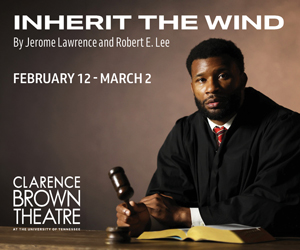For the last several years, it has felt like something of a triumph to report that Knoxville’s chamber music scene, once merely an under-attended curiosity for the most dedicated listeners, has grown by leaps and bounds, thanks mainly to the Knoxville Symphony Orchestra and its principal players. Two of those leaps, of course, were the establishment and support of two new performance series. The Concertmaster Series, initiated by Gabriel Lefkowitz and now guided by the current KSO Concertmaster William Shaub, has steadily gained in popularity to the point of full houses at the Knoxville Museum of Art. The Q-Series of lunchtime events downtown gives opportunities to the KSO’s Principal String Quartet and the Woodwind Quintet in an alternative environment at the Emporium Center.
Traditionally, though, the orchestra’s main chamber music event has been one Chamber Classics concert per season devoted to its Principal Quartet, an event which, of late, has grown to encompass both principal string and woodwind ensembles. Now in the supportive size and acoustics of UT Music’s Powell Recital Hall, that KSO series has widened its programming scope, as well as acknowledging that the word “classics” covers quite a bit of musical territory.
The first half of Sunday afternoon’s Chamber Classics concert was devoted to two works that each feature a woodwind player—Phillipe Gaubert’s Médailles antiques and Mozart’s Oboe Quartet in F Major, K. 370.
Although not a household name today, Gaubert was a noted flutist and conductor in the early 20th Century of Parisian music, later becoming artistic director of the Paris Opera. In the inspired hands of KSO flutist Hannah Hammel, violinist Gordon Tsai, and pianist Emi Kagawa, the beautifully rendered two-movement Médailles antiques from 1916 dipped immediately into an impressionistic Romanticism that rippled and flowed through alternating moments of light-hearted sparkle and lush lyricism. The contrast of pensive drama from Tsai’s violin, rhythmic drive from Kagawa, and lyrical sweeps from Hammel’s flute marked the beautiful second Danses movement.
While Gaubert was writing for his own instrument, Wolfgang Amadeus Mozart often responded to opportunities to compose for other instrumentalists he admired. Written for the Munich oboist Friedrich Ramm, the Oboe Quartet in F Major, K. 370, reveals an unmistakable confidence that Mozart had in that instrumentalist given its extraordinary demands of details and range. I’m guessing that Mozart would have been equally delighted with KSO oboist Claire Chenette and her string colleagues (violinist Edward Pulgar, violist Kathryn Gawne, and cellist Stacy Nickell). In this performance, Chenette built on a mastery of technique with a remarkable vocal-like articulation, while carefully balancing the oboe’s natural insistence with the string’s warmth and depth.
In what was, no doubt, an inevitable progression from last January’s performance of Beethoven’s Septet in E-flat Major, Op. 20, the KSO ensembles closed out the concert with Franz Schubert’s Octet in F Major. Commissioned by Count Ferdinand von Troyer, a court official and a skilled amateur clarinetist, the octet was intended to be a companion piece to the Beethoven septet, one that would offer a substantial part for von Troyer as clarinetist. Schubert patterned the work after the Beethoven septet in structure, adding a second violin for the sake of depth and a re-arrangement of two movements.
Truly, at an hour in length, the work is a substantial one for the clarinet (principal Gary Sperl) that has extended passages with the strings. But, it is also a marathon as well as for the other seven players (violins Tsai and Pulgar, violist Gawne, cellist Nickell, double bassist Steve Benne, horn Jeffery Whaley, and bassoon Aaron Apaza) amid a wealth of conversational back and forth throughout. In structural depth, the work exceeds the intensity of what one generally associates with chamber music, thus exposing players to individual demands, as well as requiring stamina, energy, and focus for extended ensemble playing.
Focus sharpened and energy materialized in the closing movement (Andante molto: Allegro). Opening with an attention-riveting ominous tremolo from Nickell’s cello, the rhythmic freneticism eventually gives way to an unexpectedly intriguing march-like passage. Summoning up a final wind, the ensemble gave the climax all of the excitement that one had expected.
————————————
The KSO’s Concertmaster Series continues on Wednesday and Thursday this week at the Knoxville Museum of Art with William Shaub and his colleagues taking on works by Glazunov, Massenet, Shostakovich, and Tchaikovsky. Information






